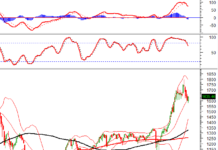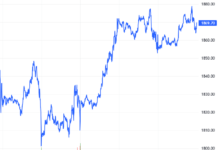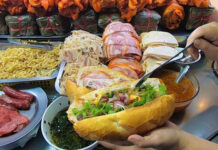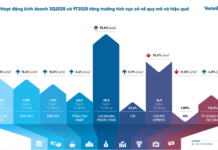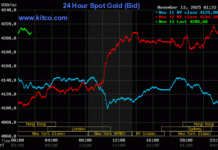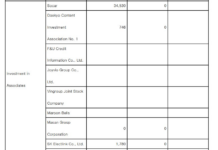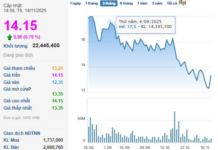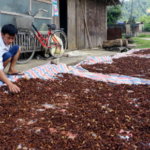According to the latest statistics from the Ministry of Agriculture and Environment, Vietnam’s agricultural, forestry, and aquatic exports reached USD 58.13 billion in the first 10 months of 2025, a 12.9% increase compared to the same period in 2024. The United States is the second-largest market (after China), accounting for 20.4% of the market share, equivalent to USD 11.85 billion, still up 6.2% year-on-year, but the growth rate has slowed. Previously, the U.S. was consistently Vietnam’s top importer of agricultural products, with double-digit growth rates.
Anticipating Tax Reductions
Recently, international media reported that U.S. President Donald Trump explicitly mentioned that coffee, spices, and other products from Vietnam, which the U.S. does not produce, could be added to the list of products eligible for reciprocal duty-free treatment.
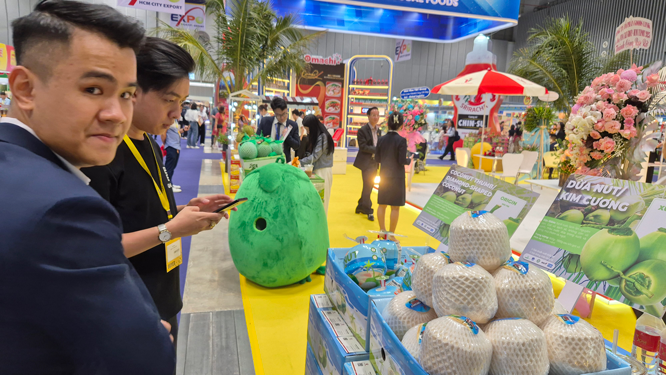
Vietnamese fruits and vegetables may gain easier access to the U.S. market if reciprocal tariffs are reduced.
According to the Ministry of Industry and Trade, the U.S. maintains a 20% reciprocal tariff on goods originating from Vietnam, as per Executive Order 14257 dated April 2, 2025. However, the U.S. is reviewing products listed in Annex III of Executive Order 14356, issued on September 5, 2025, regarding “Potential Tariff Adjustments for Like-Minded Partners.”
Products identified in this category may qualify for a 0% tariff. In the coming weeks, Vietnam and the U.S. will continue negotiations to finalize the content of the Fair and Balanced Trade Agreement, moving towards signing and ratification, paving the way for official tariff reductions to take effect.
This news has been particularly well-received by Vietnamese exporters. Mr. Ngô Minh Phương, CEO of Việt Trường Co., Ltd. (Hai Phong), specializing in exporting tilapia to the U.S., shared that he was “overjoyed to tears” upon hearing the news.
“Previously, Vietnamese tilapia was exempt from import tariffs but later faced a 10% tax, which increased to 20%. With this tax rate, U.S. customers canceled orders en masse due to the significantly higher selling prices. The U.S. does not produce tilapia and primarily imports it from China and Vietnam. However, Chinese tilapia is cheaper, so despite a tariff of over 50%, their products remain more popular due to familiarity and ease of consumption,” said Mr. Phương.
Meanwhile, the Vietnam Association of Seafood Exporters and Producers (VASEP) announced another piece of good news from the U.S.: the temporary suspension of the ban on importing crabs from Vietnam, along with the Philippines, Indonesia, and Sri Lanka. This is seen as a positive signal for Vietnam’s crab industry to maintain this important export market.
VASEP also forecasts that some chilled and frozen tuna products may qualify for a 0% tariff, which could significantly boost the competitiveness of Vietnamese tuna in the U.S., one of the world’s largest tuna-consuming markets. However, opportunities come with challenges, as the U.S. has not yet released detailed lists of eligible products.
Additionally, stringent requirements for rules of origin, traceability, and sustainability standards may pose barriers for many Vietnamese businesses. If they fail to meet these criteria, companies will struggle to leverage tariff advantages, even if they are included in the list of beneficiaries.
Amid these expectations, the trade environment between the two countries remains volatile. The U.S. continues to impose a 20% reciprocal tariff on many Vietnamese products. Experts note that the 0% tariff, if applied, will be selective, targeting only products that clearly demonstrate “fair reciprocity” and transparency in origin.
In this context, Vietnamese tuna exporters are shifting towards value-added products such as tuna steaks, fillets, and large-scale processed tuna. This approach not only enhances profit margins but also aligns with the growing trend of green and sustainable consumption in the U.S.
Golden Opportunity for Fruits and Vegetables
For fruits and vegetables, Mr. Nguyễn Đình Tùng, Chairman of Vina T&T Group and Vice Chairman of the Vietnam Fruit and Vegetable Association (Vinafruit), noted that after years of persistent efforts, Vietnamese fruits have expanded beyond serving the Asian community in the U.S. to reaching many states and local consumer groups. “I believe there is still significant growth potential, as Vietnam has a strong advantage in tropical fruits, while the U.S. primarily produces temperate fruits,” said Mr. Tùng.
According to him, fresh fruits have a short shelf life and cannot be stored as long as frozen or dried goods, ensuring stable demand and providing businesses with confidence in their market outlets. Strong export growth in recent times means there is no concern about oversupply or order declines in the near future.
If the U.S. reduces import tariffs to 0% for products it does not produce, this will be a “golden opportunity” for Vietnamese businesses. “If Vietnamese goods are exempt from tariffs while competitors still face high taxes, our competitive advantage will be significant,” Mr. Tùng emphasized.
Beyond fruits and vegetables, Mr. Tùng also highlighted rice and rice-based products as potential categories. The U.S. is trending towards imposing higher tariffs only on domestically produced goods, which could benefit imported agricultural products like Vietnamese rice.
Meanwhile, Vietnam’s coffee industry also faces significant opportunities if U.S. tax policies are adjusted. Mr. Thái Như Hiệp, Vice Chairman of the Vietnam Coffee and Cocoa Association (VICOFA) and Chairman of Vĩnh Hiệp Co., Ltd., noted that President Donald Trump has expressed a desire to prioritize Vietnamese coffee to supplement supply as Brazilian coffee faces a 50% tariff, leading to a sharp decline in shipments. “The U.S. relies on Brazil for nearly 90% of its coffee supply. If the U.S. reduces tariffs on Vietnamese coffee to 0% while other sources remain heavily taxed, this will be a major advantage for Vietnamese coffee,” Mr. Hiệp analyzed.
However, he acknowledged that U.S. consumers are accustomed to the Arabica flavor from Brazil, and transitioning to Vietnamese Robusta will require a 2-3 year adaptation period. Nonetheless, positive signs are emerging: in recent months, Vietnamese coffee exports to the U.S. have increased significantly, though volumes remain modest.
Mr. Nguyễn Tiến Định, Director of VCU Corporation, shared that his company currently exports 10-15 tons of roasted and ground coffee monthly to the U.S., with orders increasing as customers expand their store networks. “U.S. customers are proactively seeking out and purchasing 5 kg bags of roasted coffee for their shops—a sign that they are gradually embracing and enjoying the flavor of Vietnamese coffee,” Mr. Định said.
Expanding Imports of U.S. Agricultural Products
The Ministry of Industry and Trade announced that Vietnam will expand imports of agricultural products from the U.S. as part of its bilateral trade cooperation commitments. During recent visits, Vietnamese businesses signed memorandums of understanding to purchase USD 2.9 billion worth of U.S. agricultural products. Currently, the U.S. is Vietnam’s second-largest supplier of agricultural and forestry products, with key items including wheat, soybeans, cotton, wood, and animal feed.
The expanding two-way trade relationship demonstrates that not only are Vietnamese goods gaining better access to the U.S. market, but Vietnamese businesses are also playing a crucial role in the global agricultural supply chain.
Latest Developments in Reciprocal Trade Negotiations Between Vietnam and the United States
Vietnamese Minister of Industry and Trade Nguyen Hong Dien and U.S. Trade Representative Jamieson Greer recently held a ministerial-level negotiation session regarding a bilateral trade agreement between Vietnam and the United States.
Vietnam-US: New Reciprocal Tax Agreement ‘Opens Doors’ for Key Export Industries
The alignment of the reciprocal trade agreement framework between Vietnam and the United States signifies a pivotal shift toward a more balanced bilateral economic relationship. This milestone not only unlocks opportunities for Vietnamese goods to leverage tariff advantages but also paves the way for expanded market share in the U.S.

